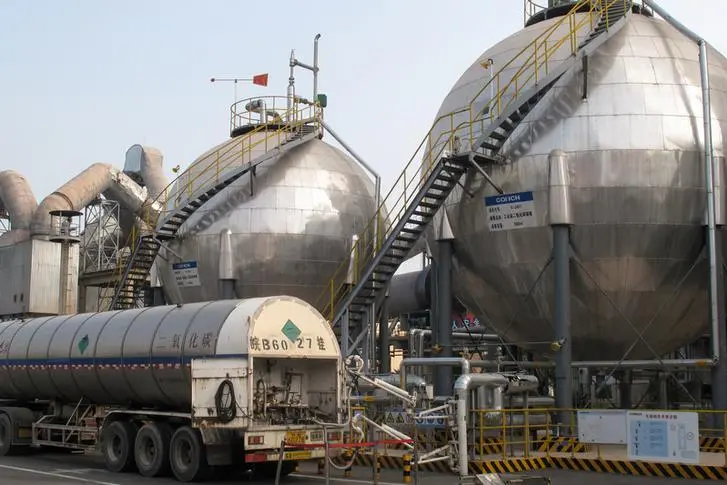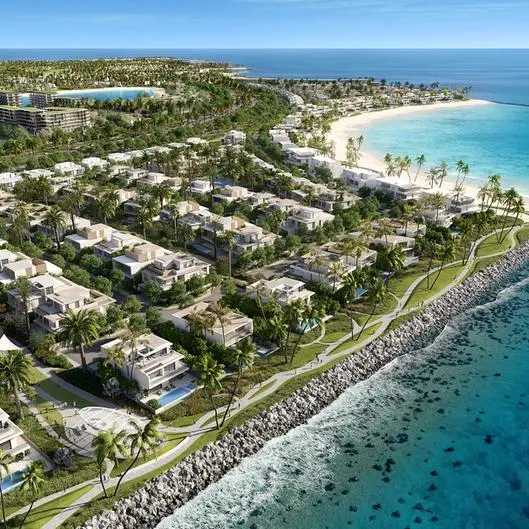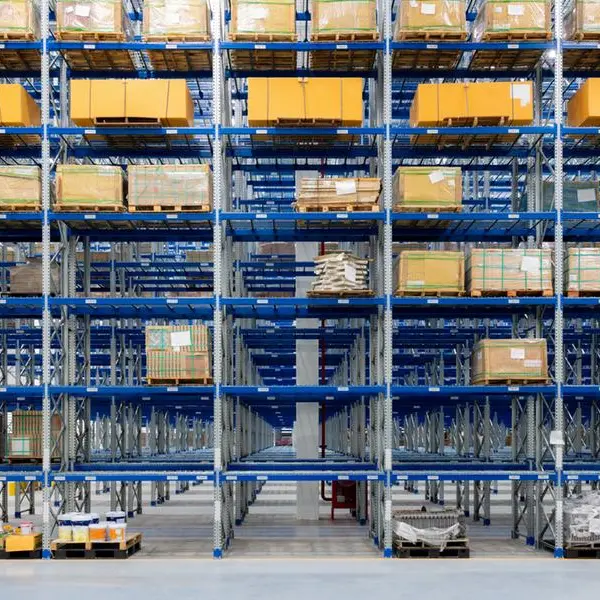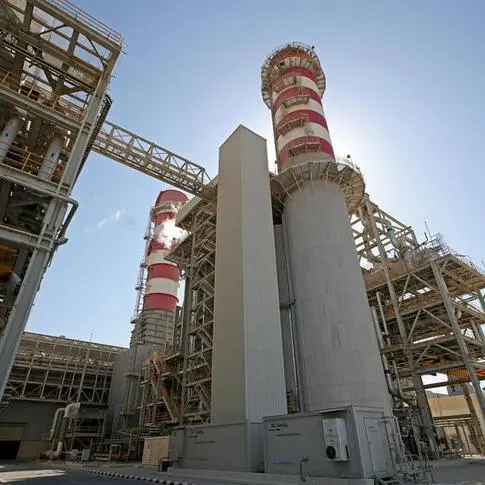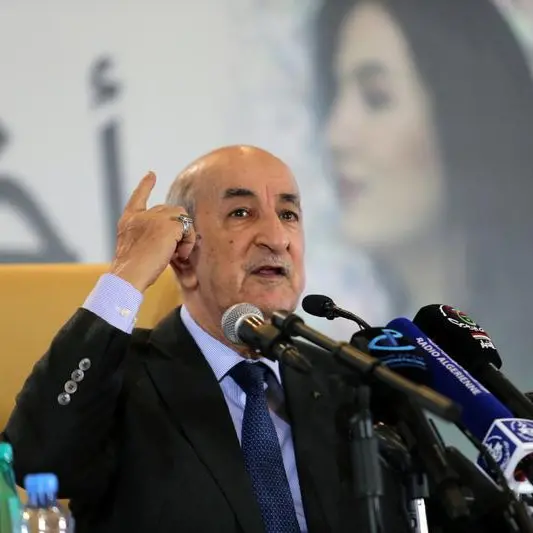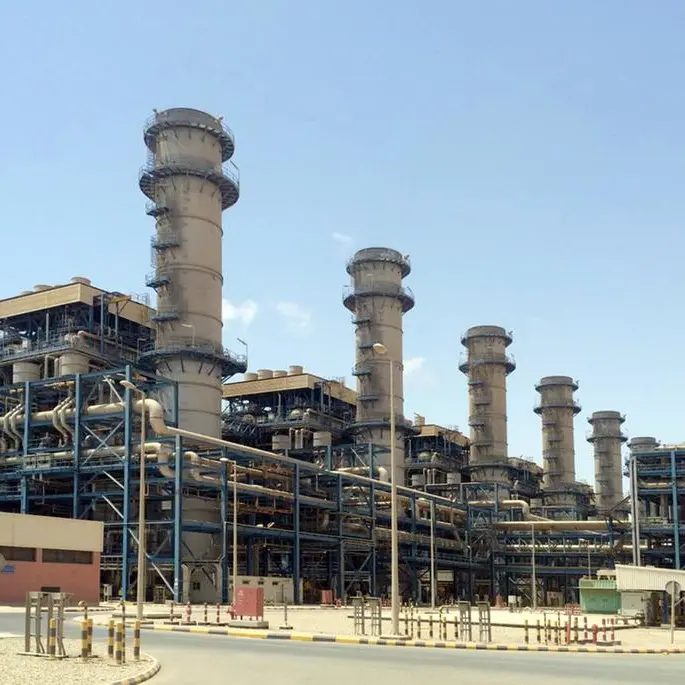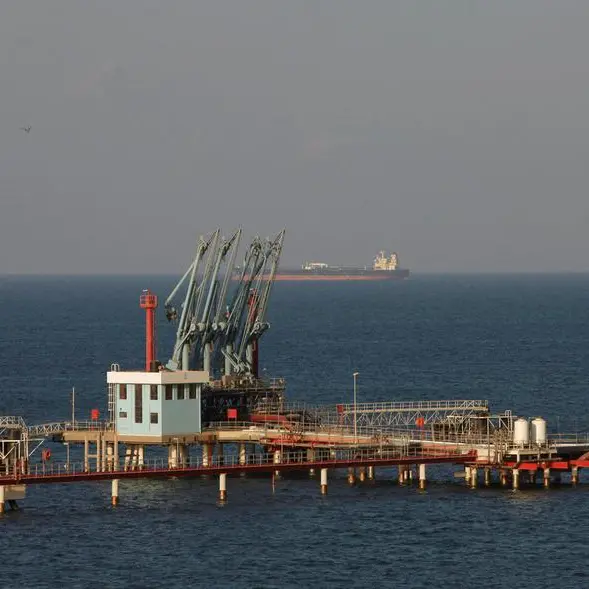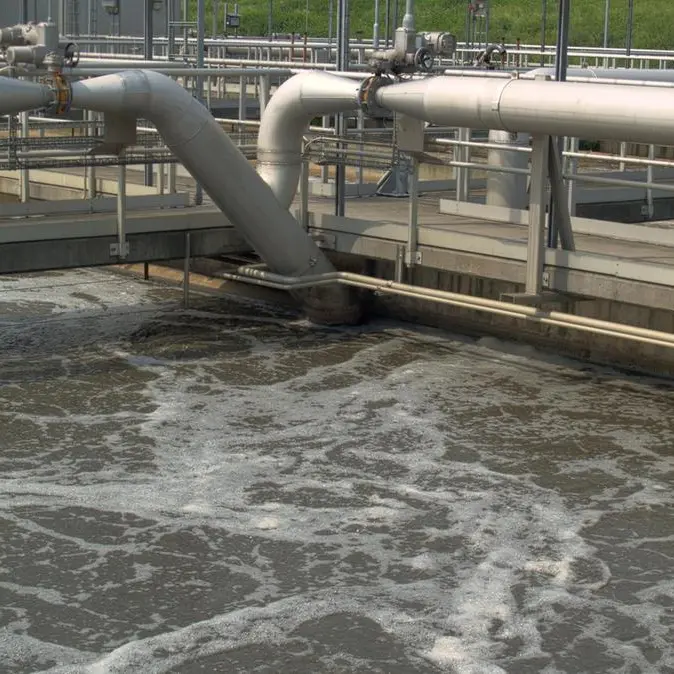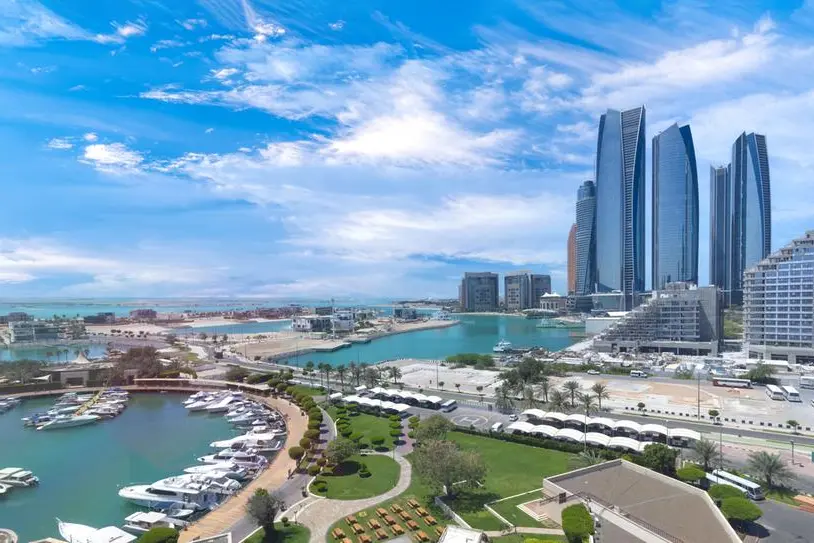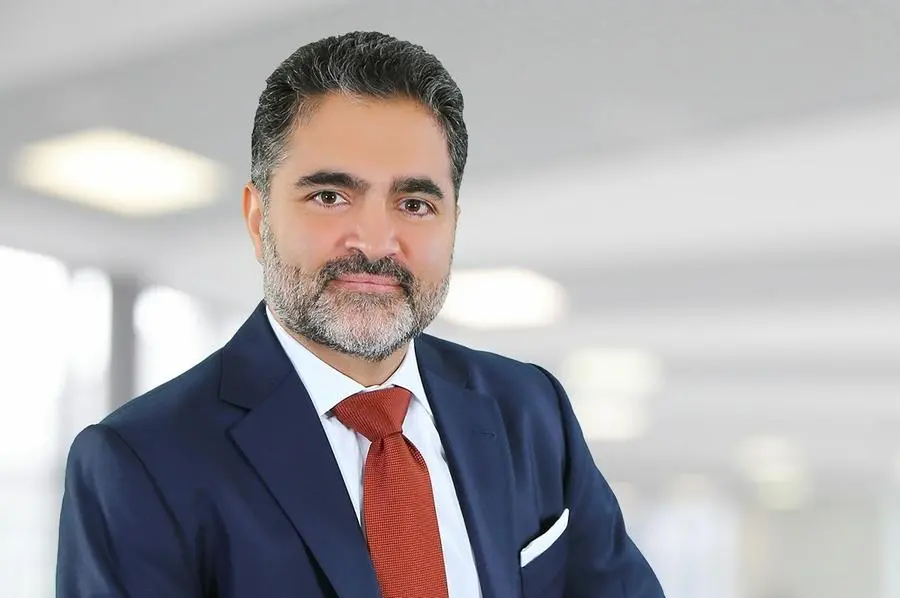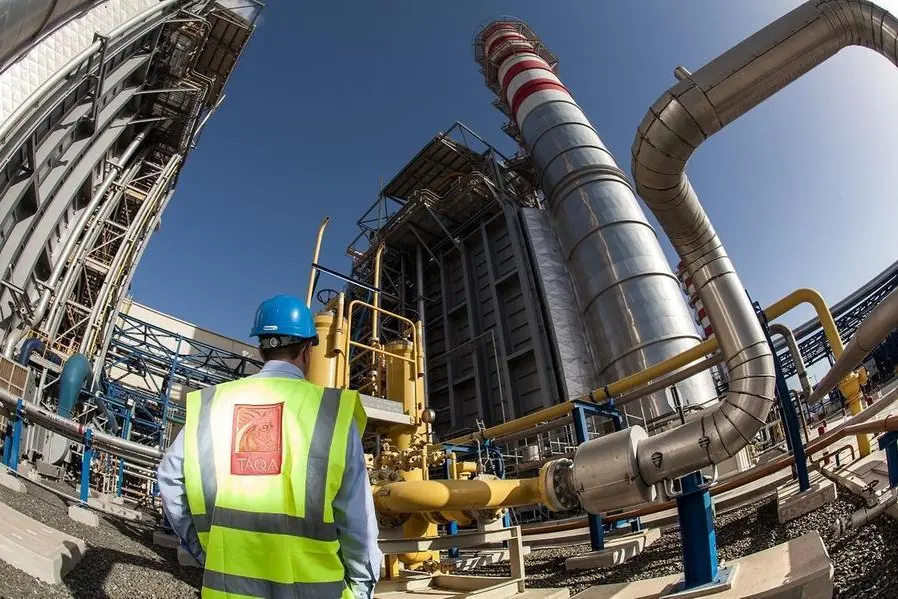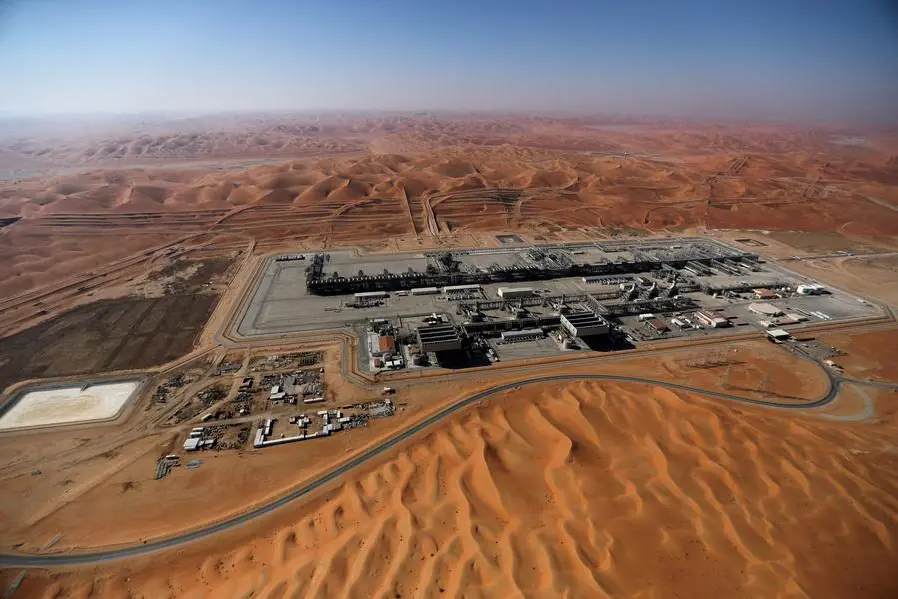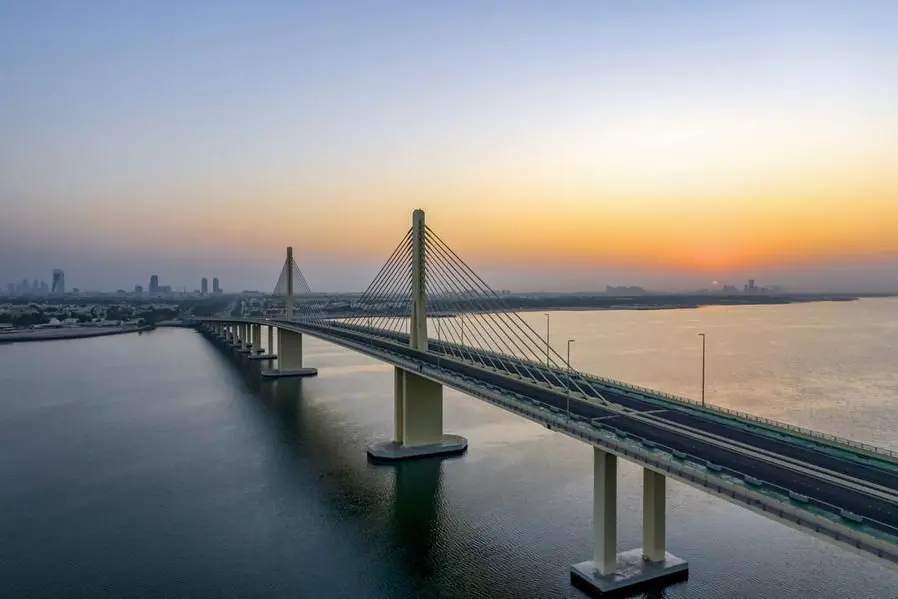PHOTO
Carbon dioxide storage tanks are seen at a cement plant and carbon capture facility in Wuhu, Anhui province, China September 11, 2019. Image used for illustrative purpose.
Nuclear fuelled clean hydrogen, renewable energy, waste to energy plants and industrial decarbonisation are some of the low hanging fruits the UAE is tapping to reach its 2050 net zero target, a senior government official said.
Speaking at a panel discussion during the 12th UAE Energy Forum on Wednesday, Yousif Ahmed Al Ali, Assistant Undersecretary for Electricity -Water & Future Energy Affairs, Ministry of Energy & Infrastructure said nuclear energy is posted to play a very important role in the reduction of the Gulf state’s carbon footprint”.
UAE is targeting 25 percent global market share of low-carbon hydrogen by 2030.
Giving an overview of the country’s clean energy plans, Al-Ali said half of the planned 6 gigawatts of solar energy is operational and the rest will be come onstream in the next few months while the first of the two waste-to-energy projects will start operations this year and the other next year.
“We are heading towards achieving 24 percent renewable energy target in the next couple of years,” he said.
The official said projects are also underway to reduce the country’s industrial carbon footprint.
Last month, ADNOC announced a $3.6 billion project to interlink its offshore production wells to clean power sources onshore through a sub-sea power cable network, a first-of-its-kind project in the MENA region.
“This will allow us to use clean energy in all our onshore and offshore oil and gas operations,” explained Al-Ali.
He also underlined that the UAE had exhibited its global leadership in carbon capture technology through the 800,000 tonne Al Reyadah carbon capture plant, whose capacity is set to increase five-fold to five million tonnes per year to support the country’s climate plans.
Role of gas
Speaking on the role of gas in the context of net zero, Hatem Al Mosa, Chief Executive Officer, Sharjah National Oil Corporation pointed out that gas would be the main transition fuel in the net zero roadmap, which also includes hydrogen replacing gas sometime in the future but infrastructure, in terms gas storage, energy storage, hydrogen storage and transport, has a key role to play.
Explaining the economics of hydrogen, Al-Mosa said, “All the process downstream to convert gas into blue hydrogen is extra cost. We have to make significant advances in the technology to make green hydrogen affordable.”
“The capital cost for middle grade hydrogen is about $18 per million BTU (British Thermal Unit), primarily because the electrodes are very expensive and have less than five years of life…that technology has to be significantly improved where you can double the lifetime of the electrodes and halve the cost.”
He said considering the historic gas prices of $10 to $15 per million BTU and six cent per KWh [kilowatt hour] for electricity, the cost for blue hydrogen works out to gas price plus $7 and for green hydrogen, it works out to about $40 (per million btu).
“But Abu Dhabi achieved less than one and ½ US$ cents per KWh (for solar electricity). If this price or even lower can be achieved everywhere … with time that would significantly reduce the bill. Eventually green hydrogen could easily become less than $15 or maybe even less than $10,” in 10 years,” he noted.
Al-Ali ruled out subsidies to help the hydrogen industry, noting that “we need to support R&D and provide the legal infrastructure to make the project happen, but the project has to prove itself.”
(Reporting by Sowmya Sundar; Editing by Anoop Menon)
© ZAWYA 2022
